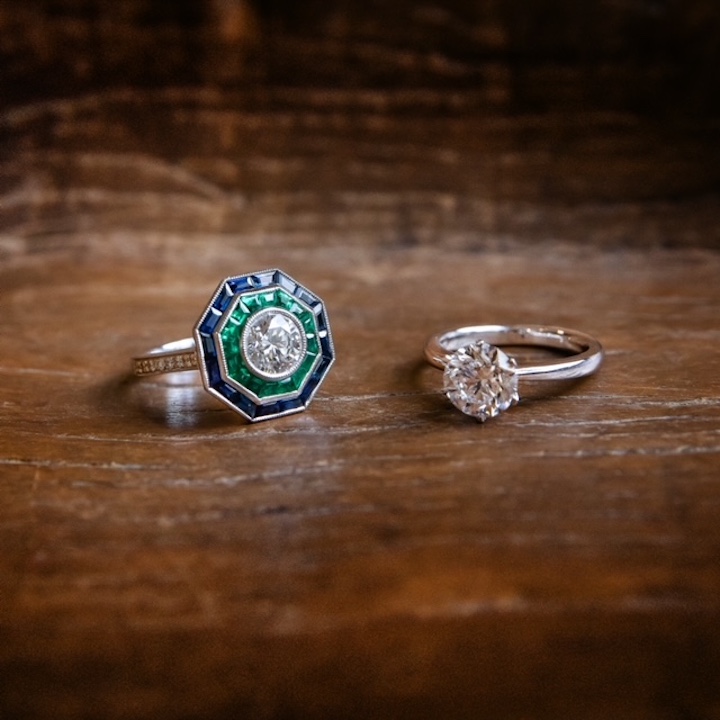Laboratory-grown diamonds, also known as synthetic or cultured diamonds, have transformed the jewelry industry providing an ethical and sustainable alternative to natural diamonds. In this article, we will delve into the process of cultivating Cómo cultivan dioamntes de laboratorio, the technologies involved, and the advantages they offer compared to natural diamonds.
Introduction to Laboratory-Grown Diamonds
Laboratory-grown diamonds are genuine gemstones with the same chemical, physical, and optical properties as natural diamonds. The primary difference lies in their origin: while natural diamonds are formed over billions of years deep within the Earth’s mantle, laboratory-grown diamonds are created in controlled environments, replicating the natural conditions that produce diamonds.
The Two Main Methods of Cultivating Laboratory-Grown Diamonds
There are two primary methods for cultivating laboratory-grown diamonds: High Pressure High Temperature (HPHT) and Chemical Vapor Deposition (CVD). Each method has its unique process and characteristics.
High Pressure High Temperature (HPHT) Method
The HPHT method mimics the extreme conditions found deep within the Earth’s mantle where natural diamonds form. Here’s a step--step overview of the HPHT process:
Preparation: A small diamond seed is placed in a chamber with a carbon source, typically graphite.
Pressurization: The chamber is subjected to pressures between 5 and 6 GPa (gigapascals), equivalent to about 50,000 to 60,000 times atmospheric pressure.
Heating: The temperature in the chamber is raised to approximately 1,400 to 1,600 degrees Celsius (2,552 to 2,912 degrees Fahrenheit).
Growth: Under these conditions, carbon atoms dissolve in a molten metal catalyst and crystallize onto the diamond seed, forming a larger diamond crystal.
Cooling and Extraction: The diamond is then carefully cooled and extracted from the chamber.
HPHT diamonds often exhibit similar characteristics to natural diamonds, including color and clarity. They are typically used in both industrial applications and fine jewelry.
Chemical Vapor Deposition (CVD) Method
The CVD method involves growing diamonds from a carbon-rich gas. Here’s a step--step overview of the CVD process:
Preparation: A diamond seed is placed in a vacuum chamber.
Gas Introduction: Carbon-containing gases, such as methane, are introduced into the chamber.
Activation: The gases are ionized using microwave energy or other methods, creating a plasma. This process breaks down the gas molecules, allowing carbon atoms to deposit onto the diamond seed.
Growth: Carbon atoms slowly accumulate and crystallize on the diamond seed, forming a larger diamond crystal.
Cooling and Extraction: Once the desired size is achieved, the diamond is cooled and removed from the chamber.
CVD diamonds are known for their high purity and are increasingly used in both jewelry and high-tech applications.
Advantages of Laboratory-Grown Diamonds
Ethical and Sustainable
Laboratory-grown diamonds are produced in controlled environments, reducing the environmental impact associated with traditional diamond mining. They eliminate concerns related to conflict diamonds and unethical mining practices.
Cost-Effective
Laboratory-grown diamonds are generally more affordable than natural diamonds of comparable size and quality. This price advantage allows consumers to purchase larger or higher-quality diamonds for the same budget.
Quality and Purity
Both HPHT and CVD methods can produce diamonds of exceptional quality and purity. Laboratory-grown diamonds can be tailored to specific characteristics, such as color and clarity, and are often indistinguishable from natural diamonds without specialized equipment.
Conclusion
The cultivation of lab created diamonds represents a significant advancement in gemology and provides numerous benefits over natural diamonds. By understanding the processes involved in creating these diamonds, consumers can make informed choices that align with their values and preferences. Whether for ethical reasons, cost considerations, or simply the allure of innovation, laboratory-grown diamonds offer a compelling alternative to their natural counterparts.




